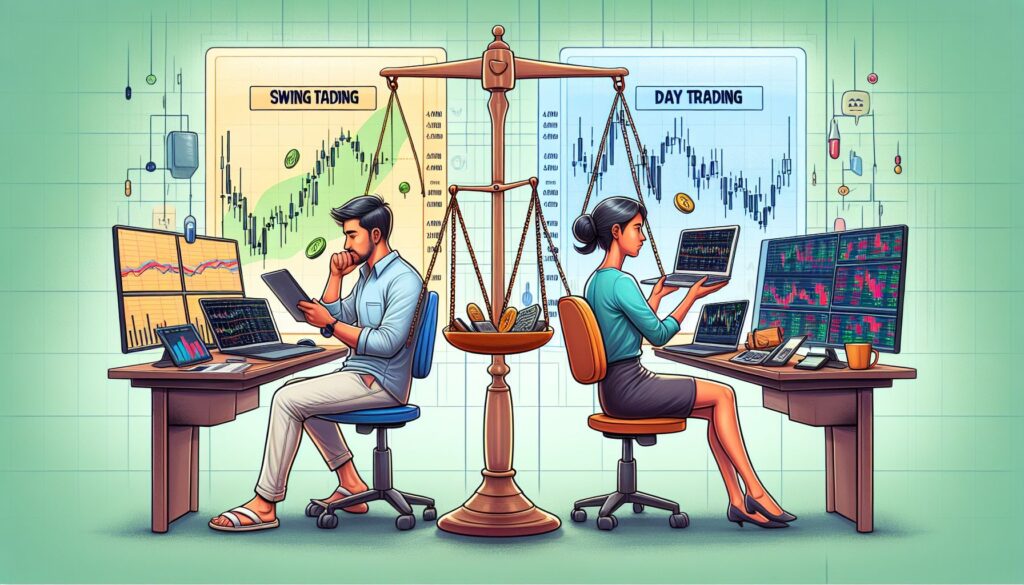Swing Trading versus Day Trading: Which is the Best Strategy for Active Traders?
In the era of easy market access and online trading platforms, various unique strategies are on the table for active traders. Unique to each individual investor’s objectives and time commitments, two top strategies have emerged: Swing Trading and Day Trading. This blog post aims to explore both techniques, weigh their benefits and drawbacks, and help you decide which might suit your trading style best.
Swing Trading
Swing Trading is a strategy that aims to capture short-term gains in a stock or financial instrument over a few days to several weeks. The traders base their decisions on technical analysis and fundamental analysis to identify price patterns and market trends.
Pros:
- Reduced Market Noise: Swing traders aren’t superglued to the screen all day. They can base their decisions on end-of-day data, eliminating the need to track every minute’s market movements.
- Better Work-Life Balance: Swing trading doesn’t require you to be in front of the screen during the entire trading session, making it an ideal strategy for those with a day job or anyone looking for healthy work-life balance.
Cons:
- Overnight and Weekend Risk: Since swing traders hold positions for days to weeks, they face the risk of price gaps from overnight news or events that occur over the weekend when the markets are closed.
- Higher Capital Requirement: Unlike day traders, swing traders are not granted the benefit of high leverage by brokerage firms, leading to a higher capital requirement for starting.
Day Trading
Day Trading, on the other hand, involves buying and selling financial instruments within the same day. The intention is to exploit small price movements in highly liquid stocks or currencies.
Pros:
- No Overnight Risk: Day traders wrap up their positions by the end of the trading day, so they are not affected by overnight or weekend news or events.
- High Leverage: Brokerage firms offer higher leverage to day traders, which can amplify their profits (though it can also magnify losses).
Cons:
- Intense and Time-Consuming: Day trading requires ongoing attention throughout the trading hours, causing mental and emotional exhaustions.
- Small Profits: Even though day traders can make numerous trades in a day, the gains from each trade can be small. The transaction costs might eat into the profits.
Trading Psychology
Understandingly, certain characteristics lean traders towards either consumer groups. Day traders must remain broadly unemotional, sticking to their profit and loss targets without being swayed by market fluctuations. This form of trading demands rapid decision-making abilities, discipline, and an in-depth understanding of market mechanisms.
On the other hand, swing trading is ideal for traders who can tolerate a higher short-term risk while waiting for their trading thesis to play out. Patience, discipline, and a knack for trend analysis would serve swing traders well.
Swing Trading vs. Day Trading: Which is Right For You?
For a full-time professional who can devote complete attention to the markets, day trading could be more suitable. It is a high-intensity strategy, requiring constant, vigilant monitoring of the market.
Conversely, if you would rather spend less time glued to a screen and don’t mind holding positions overnight, swing trading could be ideal for you.
Deciding on the right strategy will largely depend on your individual goals, risk tolerance, and available time during market hours. Both strategies have their unique advantages and come with respective risks.
In conclusion, whether you choose swing trading or day trading, both strategies require a sound understanding of markets and a disciplined approach. Regardless, it is most advisable for beginners to consult with professional advisors or brokers before making an investment decision. Remember, trading is not just about making quick profits — it involves substantial risks that should be understood well before diving in.

